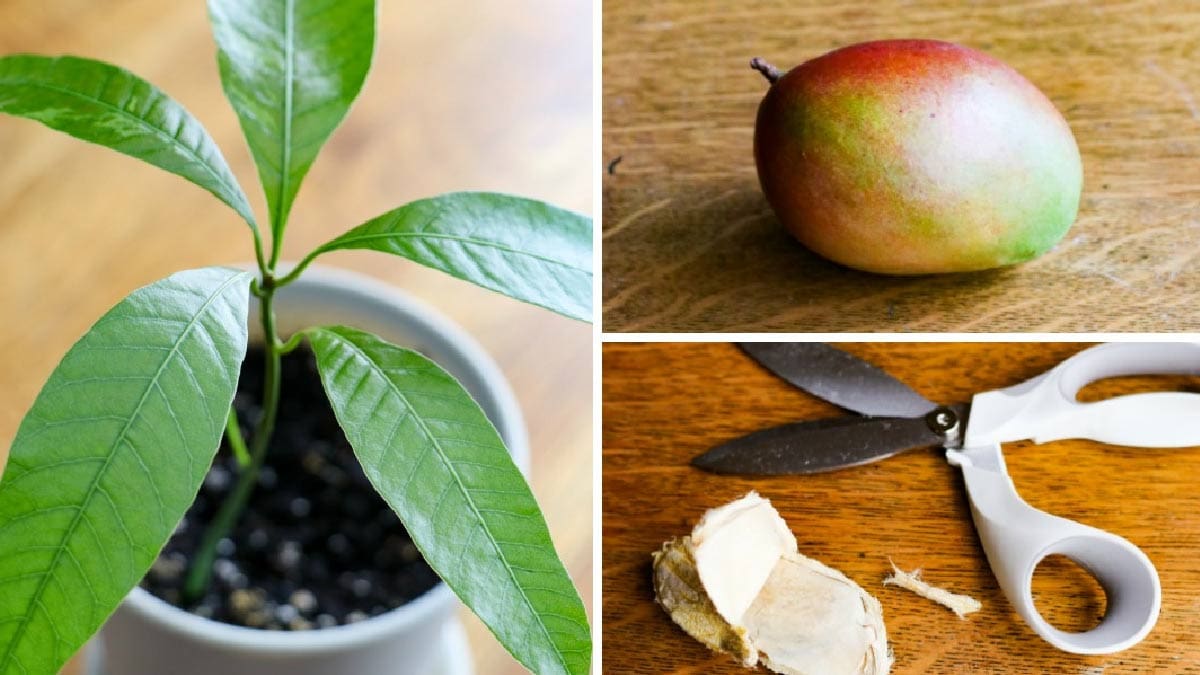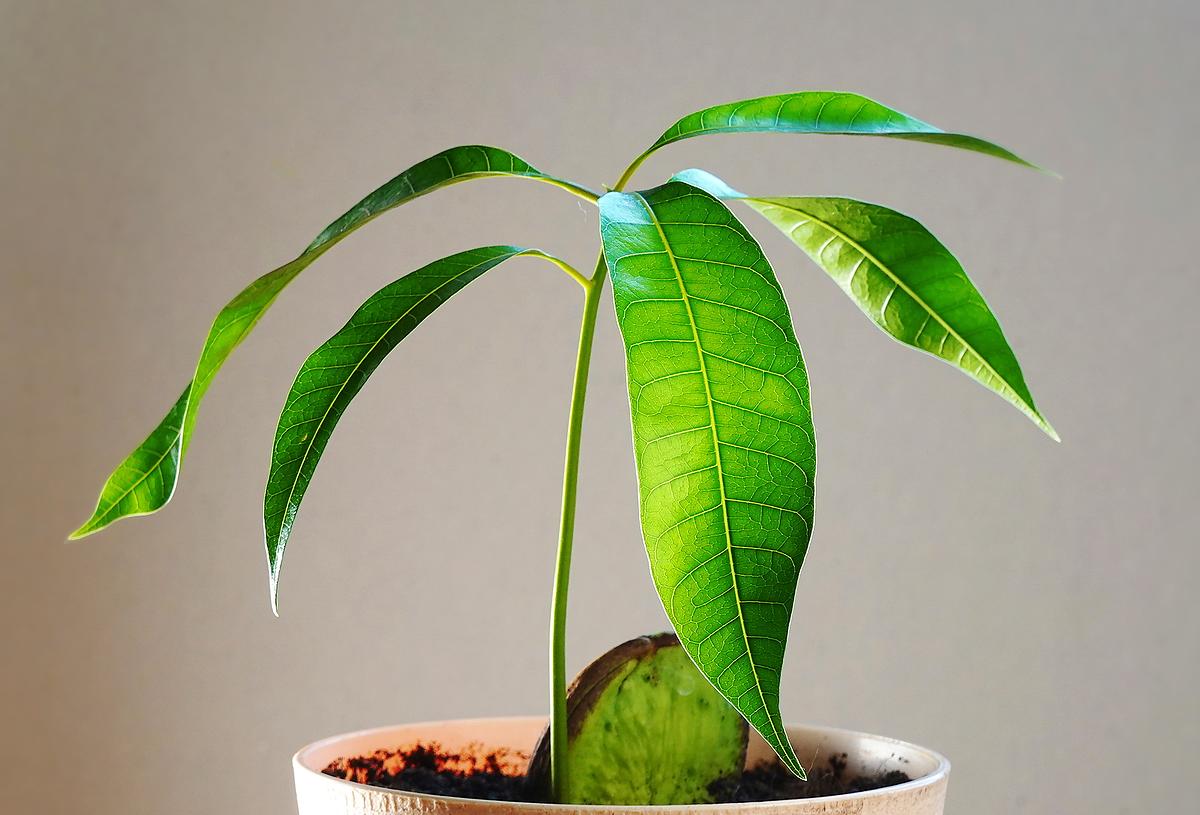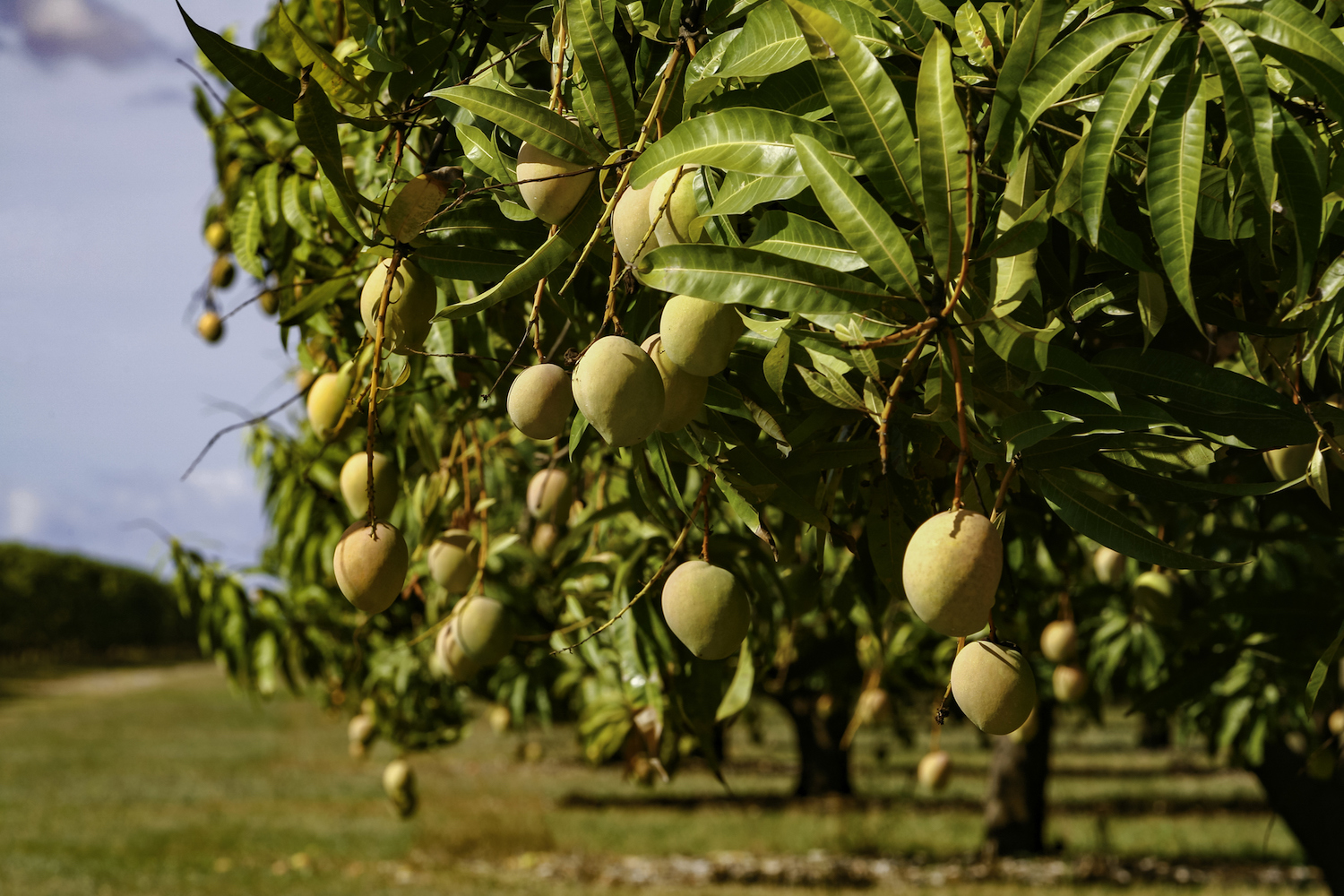I. Introduction: The Allure of Mangoes and the Journey Ahead
Mangoes, often hailed as the “King of Fruits,” captivate the taste buds with their luscious sweetness and vibrant tropical flavor. Their succulent flesh and delectable aroma make them a beloved fruit worldwide, enjoyed fresh, in desserts, or even as a savory ingredient. However, the joy of cultivating mangoes extends beyond mere consumption. Growing your own mango tree from seed offers a unique opportunity to witness the entire life cycle of this magnificent fruit, from the humble beginnings of a small seed to the bountiful harvest of juicy, ripe mangoes. This comprehensive guide will take you on a journey through each step of the process, ensuring a rewarding experience filled with anticipation, learning, and, ultimately, the satisfaction of savoring homegrown sweetness.

II. Seed Selection and Preparation: Choosing the Right Foundation
A. Identifying Quality Seeds
The success of growing a mango tree from seed largely depends on the quality of the seed itself. Opt for seeds sourced from mature, healthy fruits that exhibit desirable traits such as excellent flavor, disease resistance, and suitable climate adaptability. To ensure genetic diversity and potential cross-pollination benefits, select seeds from different varieties if possible. Once extracted, store seeds in a cool, dry place until ready to plant, avoiding prolonged exposure to sunlight or moisture that could compromise viability.
B. Seed Germination Techniques
There are two primary methods for germinating mango seeds: direct planting and pre-soaking. For direct planting, simply bury the seed about 3-4 inches deep in well-draining soil, with the pointed end facing upwards. Alternatively, pre-soak the seed in warm water for 24-48 hours to soften the hard outer shell and encourage quicker germination. After soaking, gently nick the seed’s outer coat with a sharp knife to facilitate root emergence before planting.

III. Planting and Early Care: Nurturing Your Young Mango Tree
A. Choosing the Ideal Location
Mango trees thrive in warm, sunny locations with well-draining soil and protection from strong winds. They prefer a pH range of 5.5 to 7.5 and require ample space to grow, as mature trees can reach heights of up to 100 feet. If growing in a container, choose a large pot with drainage holes and use a high-quality potting mix amended with compost or perlite for optimal aeration and moisture retention.
B. Initial Planting and Maintenance
Plant the germinated seed at a depth of 1-2 inches in the selected location. Water thoroughly after planting and maintain consistent moisture levels, being cautious not to overwater, which can lead to root rot. Apply a balanced, slow-release fertilizer during the growing season, following package instructions for proper application rates. Protect young trees from pests and diseases by using organic or chemical controls as needed, and regularly inspect for signs of stress or infestation.

IV. Pruning and Training: Shaping Your Mango Tree for Optimal Growth
A. Structural Pruning
As your mango tree grows, it is essential to establish a strong central leader and a well-spaced branch structure. Prune lower branches that compete with the main trunk, and remove any weak, diseased, or crossing limbs. This encourages upward growth, improves air circulation, and facilitates easy access for harvesting.
B. Flower and Fruit Thinning
Mango trees can produce an abundance of flowers, but not all will develop into fruit. To promote larger, higher-quality fruits, thin the flowers and immature fruits when the tree is approximately 6-8 years old. Remove excess flowers and fruits, leaving only 1-2 per cluster, spaced 6-8 inches apart along the branches. This practice also helps prevent limb breakage due to excessive weight.

V. Pest Management and Disease Control: Safeguarding Your Mango Crop
A. Common Pests and Mitigation Strategies
Mango trees may be susceptible to various pests, including aphids, scales, mealybugs, and fruit flies. Implement integrated pest management (IPM) practices, combining cultural controls (e.g., maintaining good sanitation, promoting natural predators), physical barriers (such as insect netting), and targeted chemical treatments when necessary.
B. Recognizing and Treating Mango Diseases
Diseases like anthracnose, powdery mildew, and bacterial black spot can significantly impact mango tree health and fruit yield. Regularly monitor your tree for symptoms, such as discolored leaves, fruit lesions, or premature fruit drop. Promptly treat affected areas with appropriate fungicides or bactericides, following label instructions and applying preventive measures during periods of high disease pressure.
VI. Harvesting and Storage: Reaping the Rewards of Your Labor
A. Determining Ripeness and Timing the Harvest
Mangoes do not ripen uniformly on the tree and must be picked when they reach physiological maturity but are still firm. Indicators of ripeness include a change in fruit color, a fragrant aroma, and slight softening around the stem end. Harvest using pruning shears or a sharp knife to avoid damaging the tree or fruit.
B. Post-Harvest Handling and Storage
Handle harvested mangoes gently to prevent bruising. Store unripe fruits at room temperature until they soften and develop their characteristic aroma. Ripe mangoes can be refrigerated for several days to extend shelf life but should be allowed to return to room temperature before consumption to enhance flavor and texture.

VII. Cultivating Different Mango Varieties: Exploring Diversity and Flavor
A. Regional Varieties and Their Characteristics Mangoes come in a wide array of varieties, each with its distinct flavor profile, appearance, and growing requirements. Some popular cultivars include:
- Alphonso (India): Known for its rich, creamy texture and intense sweetness, Alphonso mangoes have a bright orange skin and are considered one of the world’s finest.
- Kensington Pride (Australia): With a sweet, tangy flavor and firm flesh, Kensington Pride mangoes are versatile and widely grown in Australia. They feature a greenish-yellow skin blushed with red.
- Tommy Atkins (Florida): A commercially popular variety, Tommy Atkins has a mild, slightly fibrous flesh and a green skin covered in red and yellow hues. It is known for its good transportability and extended shelf life.
- Kent (Florida): Characterized by its large size, juicy, sweet flesh, and bright red-blushed skin, the Kent mango is a favorite among consumers for its excellent eating quality.
VIII. Conclusion: Embracing the Journey from Seed to Sweetness
Growing mangoes from seed is a fulfilling endeavor that combines the thrill of horticulture with the anticipation of enjoying the fruits of your labor. By carefully selecting and preparing seeds, providing optimal growing conditions, pruning and training your tree, managing pests and diseases, and harvesting at the right time, you can successfully cultivate a thriving mango tree that yields delicious, homegrown sweetness. Embrace this journey, and savor the profound satisfaction that comes from nurturing life from seed to fruition.
